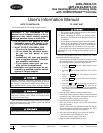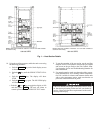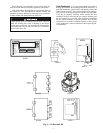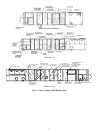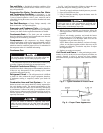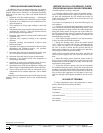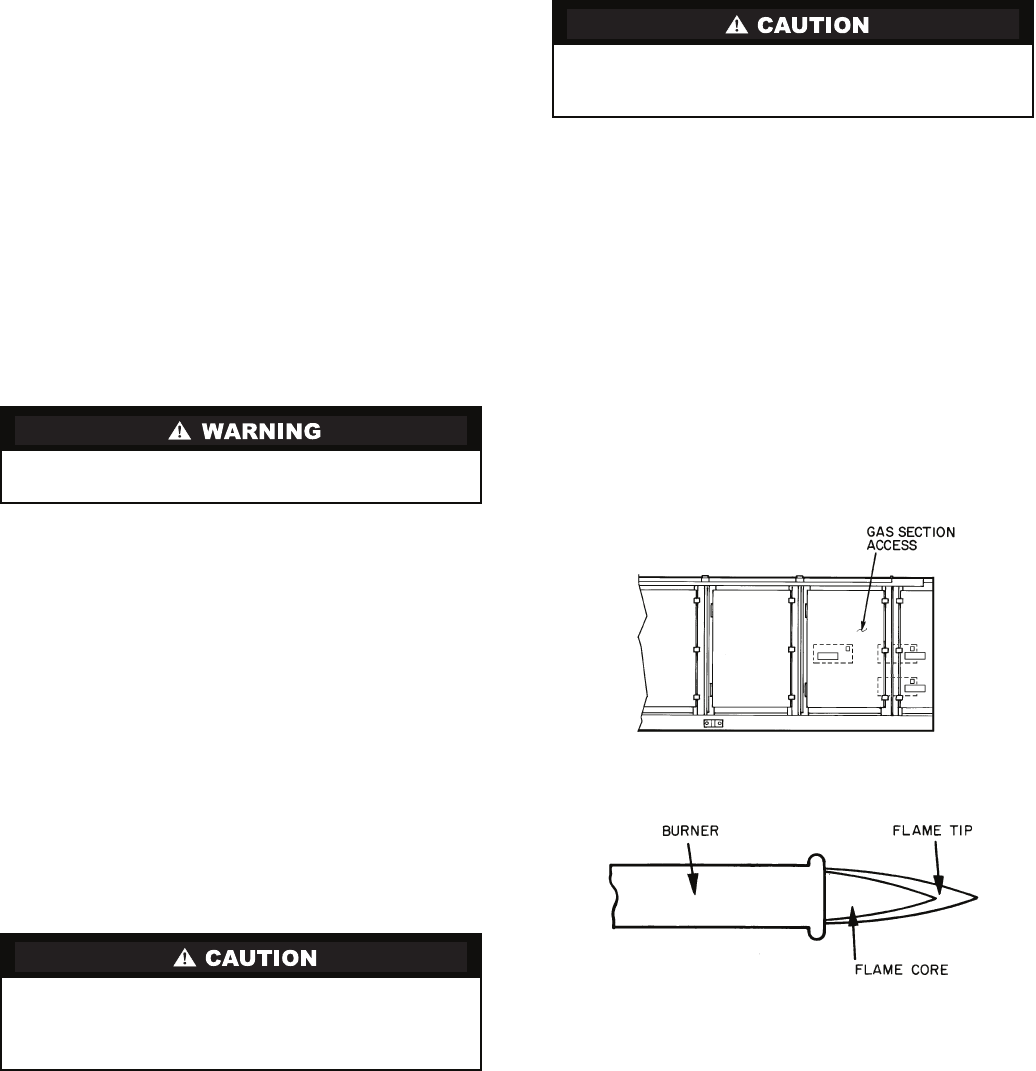
7
Fan and Belts — Periodically check the condition of fan
wheels and housings and belt tension. When service is neces-
sary, call your dealer.
Evaporator-Fan Motor, Condenser-Fan Motor
and Combustion-Fan Motor — Lubrication is not
recommended. Bearings will not require lubrication for at least
5 years of normal operation. After 5 years, motor life can be
extended by having the motors serviced at an authorized motor
service shop.
Fan Shaft Bearings — Charge fittings annually with
Shell Alvania No. 2 or equivalent grease.
Evaporator and Condenser Coils — Cleaning of the
coils should only be done by qualified service personnel.
Contact your dealer for the required maintenance as needed.
Condensate Drain — The drain pan and condensate
drain line should be checked and cleaned at the same time the
cooling coils are checked by your dealer.
Compressors — All compressors are factory shipped
with a normal charge of the correct type refrigeration grade oil
in them and should rarely require additional oil. The service
technician must be certain the proper oil level is maintained in
the compressor when it is installed and running.
Condenser Fan
The fan must be kept free of all obstructions to ensure prop-
er cooling. Contact your dealer for any required service.
Electrical Controls and Wiring — Electrical controls
are difficult to check without proper instrumentation; therefore,
if there are any discrepancies in the operating cycle, contact
your dealer and request service.
Refrigerant Circuit — The refrigerant circuit is difficult
to check for leaks without the proper equipment; therefore,
if inadequate cooling is suspected, contact your dealer for
service.
Combustion Area and Vent System — The com-
bustion area and vent system should be visually inspected be-
fore each heating season. The normal accumulation of dirt,
soot, rust, and scale can result in loss of efficiency and improp-
er performance if allowed to build up. Accumulation on the
burner crossover tube can result in the burners firing out of nor-
mal time sequence. This delayed ignition is characterized by an
especially loud sound.
See Fig. 1 and 5 and proceed as follows to inspect the com-
bustion area and power-venting system of your unit.
1. Turn off gas supply and then electrical power to your unit.
2. Open gas section access door.
3. Using a flashlight, carefully inspect the burner areas for
dirt, soot, rust, or scale.
4. When you have completed your inspection, follow the
start-up procedures in this manual to restore your unit to
operation.
5. Observe unit heating operation, and watch the burner
flame core to see if it is bright blue. If you observe a sus-
pected malfunction, or if the burner flame cores are not
bright blue, call your dealer. See Fig. 6.
NOTE: Burner flame cores that have a mixture of orange,
yellow, or red flames together with the blue may not be
burning gas efficiently. Your dealer may have to adjust
the air/gas mixture.
6. Replace gas section access panel.
Unit Panels and Doors — After performing any main-
tenance or service on the unit, be sure all panels and doors are
securely fastened in place to prevent rain from entering
unit cabinet and to prevent disruption of the correct unit airflow
pattern.
Do not poke sticks, screwdrivers, or any other object into
revolving fan blades. Severe bodily injury may result.
If your unit makes an unusual or especially loud noise
when the main burners are lit, shut down the heating
section and call your dealer. Bodily injury or unit damage
may result.
If dirt, soot, rust, or scale accumulations are found, call
your dealer and do not operate your heating section.
Bodily injury or unit damage may result.
Fig. 5 — Typical Location of Access Panel
Fig. 6 — Proper Flame Appearance



